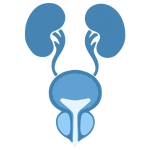Erectile dysfunction
Erectile dysfunction (ED) is called the persistent inability to attain and maintain an erection sufficient to permit satisfactory sexual performance. It’s a disease that affects the physical and psychological health and often has a negative impact on the person’s and partner’s quality of life. Furthermore ED must be considered as an early stage sign of coronary and peripheral vascular disease.
Studies reported prevalence (% of people affected) of 19-52% in men aged from 30 to 80 years while new cases of ED is about 26 per 1000 men annually. Other studies reported that one in four patients seeking first medical help for new-onset ED is younger than 40 years, with almost 50% of the young men complaining of severe ED.
ED is a common problem that may concern even young men. The idea of not being able to perform a satisfactory sexual intercourse is frustrating and often the patient makes a deliberate attempt to avoid it. Relationships, as well as social in general are adversely affected.
ED should no more be a social taboo. Every man with no satisfactory sexual performance should not hesitate to seek for medical help. It’s a disease and must be treated. As soon as risk factors are identified and the workup is completed, we discuss the patients’ needs and expectations. Then we plan the best therapeutic approach.
Causes of erectile dysfunction
- Vasculogenic
- Neurogenic
- Hormonal
- Anatomical or structural
- Drug-induced
- Psychogenic
- Trauma
Disease management
- Life style changes and risk factor modification
- Provide education and counselling to patients and partners
- Pharmaceutical treatment
- Surgical treatment to correct anatomical and structural issues or penile prosthesis implantation (when other treatments have fail or fail to meet patients’ expectations).


